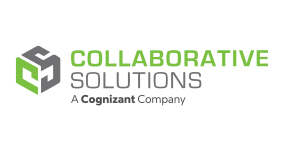
Higher education is currently facing unprecedented challenges. Having to pivot to remote learning in 2020, higher education institutions now must find safe ways of bringing students back to campus, while also reducing costs and increasing organizational efficiency. Perhaps, the biggest challenge is contending with student admission rates. For context, according to The National Student Clearing House Research Center, the U.S. saw a 5% drop in total enrollment in Spring of 2021 compared to 2020. That is up from the 2.6% average annual decline that has occurred every other year since 2010.
To overcome this challenge, colleges and universities need to take a more data-driven approach to recruiting, leveraging technologies such as cloud-based student information systems and powerful analytics solutions to help attract new students.
While the drop in enrollment is due to a variety of factors (economic challenges, COVID concerns, etc.), the bottom line is that colleges and universities need to take greater steps to attract new students. To do so, colleges and universities should review every aspect of their enrollment process and find ways to improve efficiency, deliver a better student experience, and reduce recruiting costs. This starts with technology, which has grown in importance since the start of the pandemic and has been embraced by both educators and students. According to the Digital Learning Pulse, a joint study that looked at higher education students and faculty attitudes toward technology post-pandemic, 57% of students said they were more optimistic about online learning than they were before the pandemic.
Here are a few areas that can help higher education institutions increase enrollment:
Let’s look at how a higher education institution can leverage technology to help deliver a better student experience and improve enrollment rates.
Even before the COVID-19 pandemic, there were calls for higher education institutions to embrace data and analytics. A joint statement between Educause, the National Association of College and University Business Officers, and The Association for Institutional Research stated, “We strongly believe that using data to better understand our students and our own operations paves the way to developing new, innovative approaches for improved student recruiting, better student outcomes, greater institutional efficiency and cost containment, and much more.”
The pressure that the pandemic and the subsequent economic challenges that it created have greatly increased the need to take a data-driven approach to student recruiting.
Identify and invest in your most effective recruiting campaigns and events.
Student recruiters need to be able to find which tactics, events, and marketing initiatives drive the best results for attracting new students and then double down on those activities. This is especially important given that the pandemic has forced many colleges and universities to find creative ways to connect with potential students. For example, higher education institutions in Europe and the U.K. have started hosting online events in which prospective students can connect and learn more about the college or university. As organizations experiment with new student recruitment tactics, they need to be able to monitor these tactics to improve upon them. Having access to event and campaign data allows higher education organizations to analyze these initiatives and determine which are worth investing more time and money. A modern, cloud-based student information system, like Workday Student, allows colleges and universities to easily track campaign and event progress and make changes to them as needed.
Target the students most likely to be a good fit for your institution.
Student retention has been a serious issue in higher education for the past few years. In fact, approximately 40% of students will drop out. Students dropping out naturally leads to lost revenue and more work for recruiters. Colleges and universities need to focus on students that are most likely to be a good fit for the institution and are therefore more likely to stay at the school long enough to graduate. To identify the potential students that would be a good fit, student recruiters need to be able to leverage existing data on previous students that graduated to determine which attributes they have in common, then apply that knowledge to existing and future recruitment efforts.
Manage the costs of recruiting efforts.
The average cost for a public college or university to recruit an undergraduate is $470, according to a report by RNL. Multiplied by the hundreds or thousands of students that higher education institutions are looking to attract, this can become quite costly. Many colleges and universities have limited budgets and resources, so recruitment efforts need to be as efficient as possible to attract many qualified students while keeping costs low. Utilizing a financial tool such as Workday Financial Management provides higher education institutions with increased transparency and allows for better decision making. The result: it is easier to keep costs under control and find new ways to reduce the cost per prospect.
Check out these popular articles on digital transformation in higher education:
For a real-world look at how higher education institutions can use sophisticated cloud tools to leverage their data and deliver better outcomes, read Collaborative Solutions’ product spotlight featuring the University of York.

Collaborative Solutions, a Cognizant company, is a leading global finance and HR transformation consultancy offering a full range of enterprise cloud consulting and support services for Workday ERP implementations.